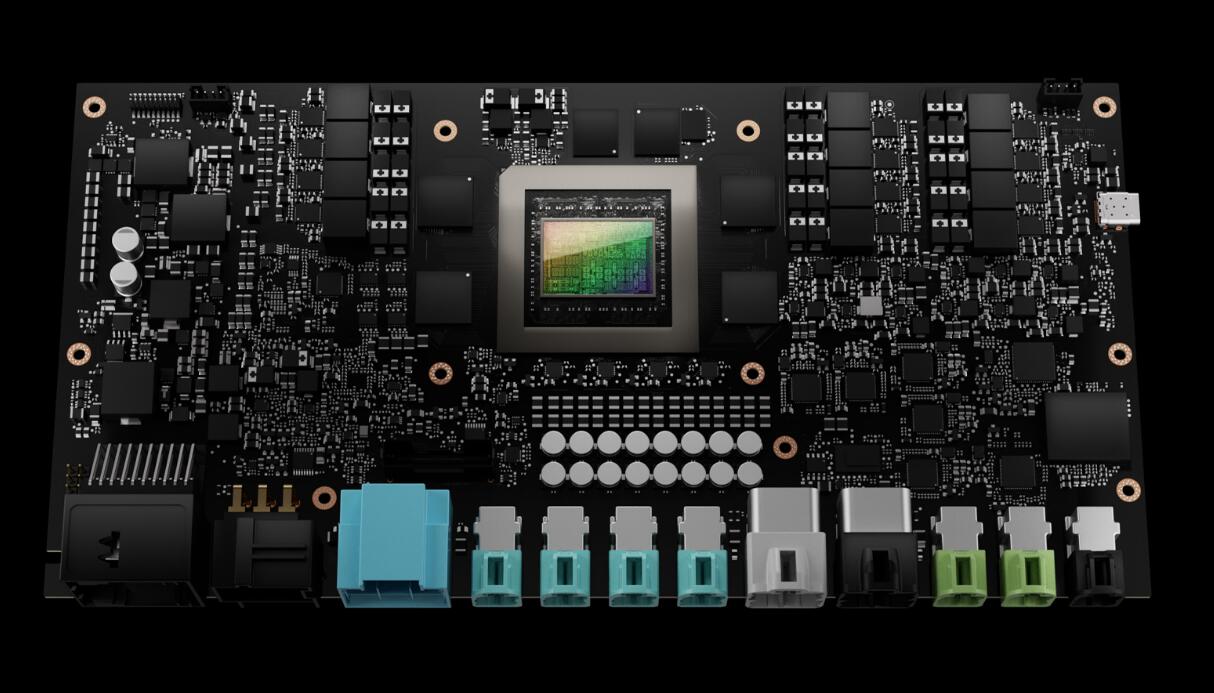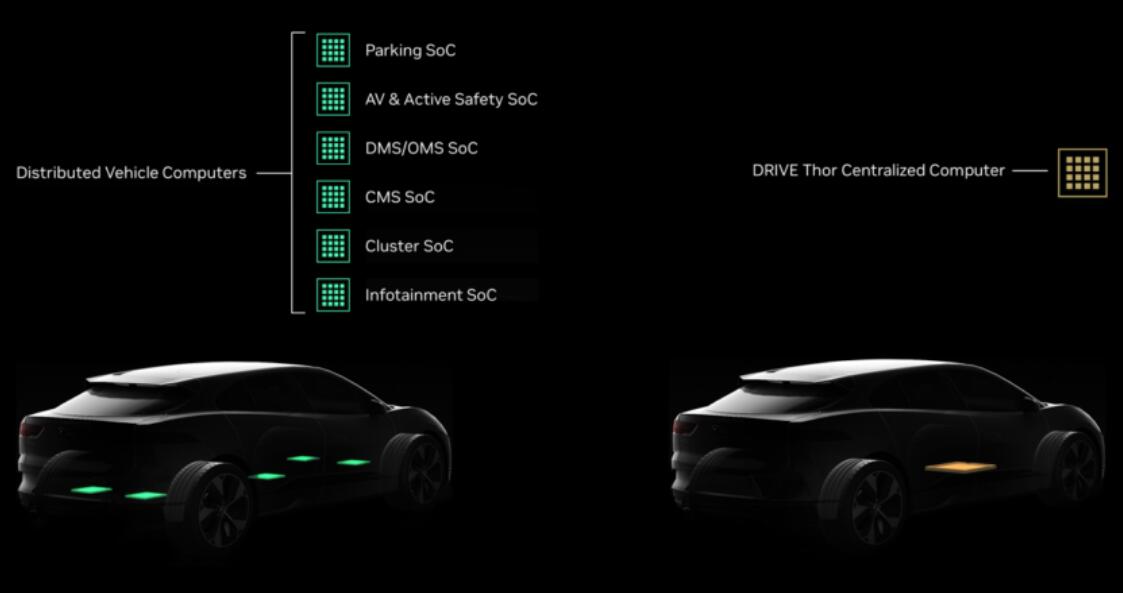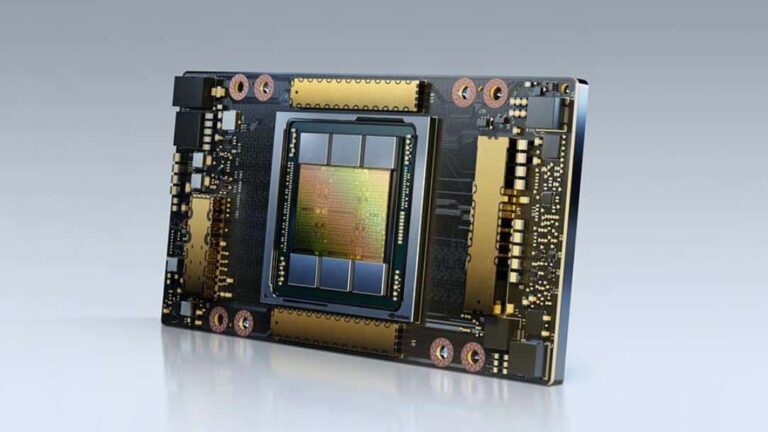DRIVE Thor offers 2,000 TOPS of performance, eight times that of DRIVE Orin, and targets automakers' 2025 models.
(Image credit: Nvidia)
Chinese electric vehicle (EV) companies are scrambling to use the most advanced chips available in their models, just as local smartphone makers are.
US chip giant Nvidia on Tuesday unveiled DRIVE Thor, a new system for autonomous driving, as a successor to DRIVE Orin, aimed at automakers' 2025 models.
DRIVE Thor is the next generation in Nvidia's AI computing roadmap, unifying the traditionally distributed functions in cars, including digital cluster, infotainment, parking and assisted driving, to improve development efficiency and accelerate software iteration.
The system-on-a-chip (SoC) builds on the latest CPU and GPU advances to deliver 2,000 teraflops (TOPS) of performance, and manufacturers can use them all for the autonomous driving pipeline or use one part for in-vehicle AI and infotainment and another part for driver assistance.
Nvidia's most advanced such SoC currently available is the DRIVE Orin, which is being used by companies including Nio, Pony.ai, and can deliver 254 TOPS of computing power each.
The DRIVE Thor has eight times the performance of the DRIVE Orin and two times that of Altan, which Nvidia had planned to release in two years.
Last year, Nvidia announced Altan, a self-driving chip to replace Orin, capable of delivering 1,000 TOPS of computing power and scheduled to be available in 2024. Altan was replaced with the company's Thor announcement on Tuesday.
Chinese car companies are scrambling to become adopters of Nvidia's latest chips, just as local smartphone makers are doing with Qualcomm's latest chips.
The first customer Nvidia announced that will use DRIVE Thor is Geely's Zeekr, an EV brand that currently uses smart driving solutions provided by Intel's Mobileye.
Zeekr will integrate DRIVE Thor on a centralized on-board computer for its next-generation smart electric vehicles, with production starting in early 2025, according to a press release from Nvidia on Tuesday.
"Zeekr users demand a luxury experience that includes the latest technology and safety features. NVIDIA DRIVE Thor will support our mission of providing cutting-edge technology that fulfills the needs of our customers and ensures ZEEKR remains at the forefront of tomorrow's innovations," said Zeekr CEO An Conghui.
Both Nio and Xpeng Motors reposted a preview by Nvidia China of the presentation by the company's founder and CEO, Jensen Huang, on Weibo on Tuesday.
Neither company announced whether they will use DRIVE Thor, but that is to be expected as Nio has already equipped its NT 2.0-based models -- ES7, ET7, ET5 -- with the Nio Adam supercomputer, which uses four DRIVE Orin SoCs, while Xpeng's G9 SUV, which will be officially launched in a few hours, also uses two DRIVE Orin SoCs.
DRIVE Thor is capable of multi-domain computing, which means it can divide tasks for autonomous driving and in-car infotainment systems, Nvidia's press release said Tuesday.
This isolation of multiple compute domains allows concurrent time-critical processes to run uninterrupted. On a single computer, the vehicle can run Linux, QNX and Android at the same time.
Like the current DRIVE Orin, the DRIVE Thor uses the productivity of the Nvidia DRIVE software development kit, which allows developers to seamlessly port their past software development to the latest platform.
DRIVE Thor looks attractive, but there are risks for Chinese car companies.
Late last month, the US government began imposing restrictions on Nvidia's exports of high-end GPU chips to China, potentially affecting local car companies' development of autonomous driving algorithms.




